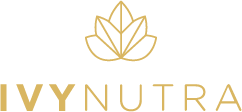
Tips On Improving Iron Intake
Melanie de LaineShare

Iron is an essential mineral for blood production. It plays an important role in forming new red blood cells, transporting oxygen to our muscles and keeping our immune system strong.
The Recommended Daily Intake (RDI) for iron is 18mg per day for women (19-30) and 8mg per day for men (19-30.) However iron is one of the most common nutrient deficiencies, especially in women.
Notice above the large difference between intakes for men and women, this is because iron intakes are highly variable, taking into account requirements for rapid growth, menstruation and pregnancy.
Low iron stores can cause low energy, reduced physical capacity, impaired cognitive function and impaired immunity. This is why it is important that we maintain a healthy level of iron for optimal health.
How can we increase our iron intake?
The body can not create iron so it must be acquired through the diet. Incorporating foods that are rich in iron into our diet is the best way to maintain healthy stores of iron. The form in which iron is consumed will affect dietary intake requirements as not all dietary iron is equally available to the body. Iron in foods comes in two general forms: haem or non-haem iron.
Iron from animal food sources such as meat, seafood and poultry can be either haem or non-haem, whereas plant based sources of iron are non-haem. The haem form is much more bioavailable to humans than non-haem, meaning it is absorbed by the body more efficiently.
Haem Iron Sources:
-
Red meat
-
Poultry (chicken, turkey)
-
Seafood (Salmon, oysters, white fish)
Non-Haem Iron Sources:
-
Tofu
-
Brocoli
-
Dark green leafy vegetables (spinach & kale)
-
Pepitas
-
Spirulina (Algae powder)
-
Dark chocolate
-
Baked Potatoes
-
Kidney Beans
-
Green lentils
-
Dried apricots
-
Hemp, chia and flaxseed
-
Brown rice/Quinoa
-
Wholemeal Bread/Pasta
-
Fortified cereals
How can we maximise our iron absorption?
Although animal sources of iron may be more efficiently absorbed by the body, it is possible to get a healthy intake from non-haem sources as well along with the presence and absence of certain nutrients.
While consumption of haem (animal based sources) can also increase the uptake of non-haem (plant based sources,) consuming foods rich in Vitamin C is also important as this will increase absorption by 50%. It is important for the health of all humans, but even more so for those who are vegetarian or vegan.
Rich sources of vitamin C include:
-
Brocoli
-
Brussel Sprouts
-
Cauliflower
-
Spinach
-
Leafy greens
-
Cabbage
-
Sweet and White Potatoes
-
Tomatoes
-
Green and red capsicum
-
Blackcurrents
-
Kiwi Fruit
-
Citrus Fruits (Oranges, Lemons)
-
Strawberries
In contrast, some nutrients can inhibit the absorption of iron, such as calcium and zinc in high amounts.
Where possible, aim to consume calcium sources separately to those iron rich foods to maximise absorption.
Other iron blockers to avoid include coffee, tea and soft drink.
So there you have it! The best way to achieve healthy levels across ALL nutrients is to stick to basic, whole foods and eat a variety of colour, as fruit and vegetables are the richest sources of most micronutrients. If you know someone who struggles with their iron levels, don’t forget to share this post with them.
Mel xx
